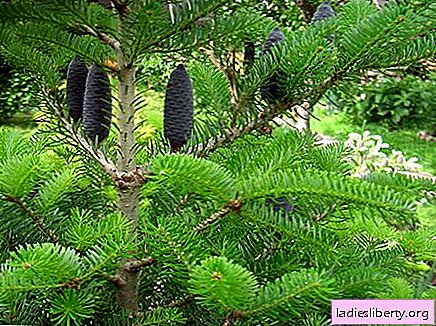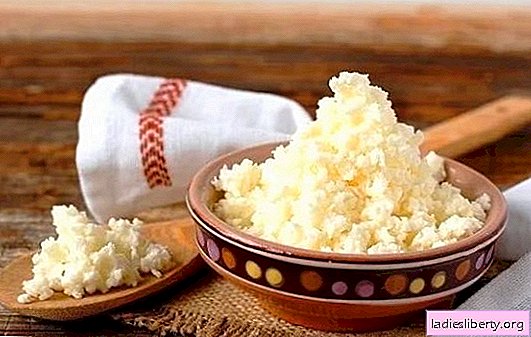
Fir - general description
Fir - This is an evergreen tree, which reaches 35 - 45 meters in height and 50 centimeters in diameter and has a narrow conical crown, which retains its shape until old age. Branches are thin, lowered to the ground, especially in lonely growing trees.
The needles of a tree are solitary, they are located on the lateral branches spirally. Cones are cylindrical or ovoid in shape. A characteristic feature of firs is that their cones, unlike other conifers, grow up. The life span of the plant is 150-200 years.
Fir - types and places of growth
The tree is demanding for air humidity and prefers to settle in mountainous areas and along river valleys. In nature, firs are found in the temperate and subtropical zones of Eastern and Central Europe, the Far East, Siberia, Central Asia and North America. Fir is common in the western hemisphere.
Pure fir stands today are considered a rarity, most often the tree grows as an admixture of cedar, spruce and other species. Often appears in the form of a second tier in aspen, but almost never occurs with ordinary pine.
Fir - healing properties
Fir is called one of the most useful trees. Preparations with its extracts are used for rheumatism, inflammatory processes, chronic and acute heart failure, as well as for infectious diseases.
Fir oil is used to treat sciatica, neuralgia and myositis, to stop bleeding and to heal wounds. Fir bath broom is used not only for its intended purpose, but also as an inhaler: steam is able to knock out essential oil from a branch, which is then absorbed into the lungs and skin. Also, the branches are stocked up for the winter for taking baths.
Fir needles, due to their vitamin C content, are known as anti-zingotic agents. The healing properties of fir are also manifested in the reduction of swelling and pain in osteochondrosis, as well as anti-inflammatory action. It is said that essential oil enhances visual acuity when the eyes get tired. It is often used to treat insomnia, since the drug has a beneficial effect on the nervous system, rejuvenates the entire body and relaxes muscles well.
Fir - dosage forms
In medicine, mainly fir oil is used, which is a clear, colorless or light yellow liquid with a characteristic tarry odor. Oil is found in fir paws and young branches, which serve as the main healing raw material. Camphor is extracted from fir oil, which is used in medicine for heart failure.
Fir resin is also used, which is collected from the bark of trees. The resin is mixed with the bile of a boar or a bear and used for diseases of the stomach. For medicinal baths and inhalations, branches are harvested, which are characterized by high bactericidal activity. For example, fir twigs brought into the room make the air almost sterile.
Fir - recipes
For the treatment of radiculitis, plexitis, and other diseases of the peripheral nervous system, it is worth rubbing a few drops of fir oil into the lumbar region. Before the procedure, taking a hot bath will not be superfluous. The course of treatment consists of fifteen procedures.
To relieve acute toothache, you need to moisten oil with cotton wool, attach it to the tooth and hold for about 20 minutes. After an hour and a half, you can repeat the procedure. With periodontal disease, twenty applications with fir oil should be made: moisten a piece of bandage with a product and apply for 15-20 minutes to the gums.
With angina, two drops of pure fir oil need to be dripped onto the inflamed gland. A similar procedure is recommended to be done several times a day, every 4 hours. With bronchitis and pneumonia, a good effect was noted after rubbing the body with oil and inhalation: pour boiling water and 3 drops of oil into an enameled bowl, cover with a blanket with your head and breathe for 10-15 minutes.
Fir - contraindications
Using drugs with fir extract and essential oil is prohibited in acute inflammation of the kidneys and pregnancy, because fir has a toxic effect on the fetus.
Comments











